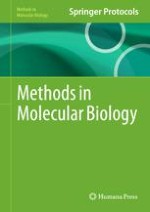
2015 | Online First | Chapter
Generation and In Vitro Expansion of Hepatic Progenitor Cells from Human iPS Cells
Authors : Ayaka Yanagida, Hiromitsu Nakauchi, Akihide Kamiya, Ph.D.
Published in: Methods in Molecular Biology™
Publisher: Springer New York
Activate our intelligent search to find suitable subject content or patents.
Select sections of text to find matching patents with Artificial Intelligence. powered by
Select sections of text to find additional relevant content using AI-assisted search. powered by